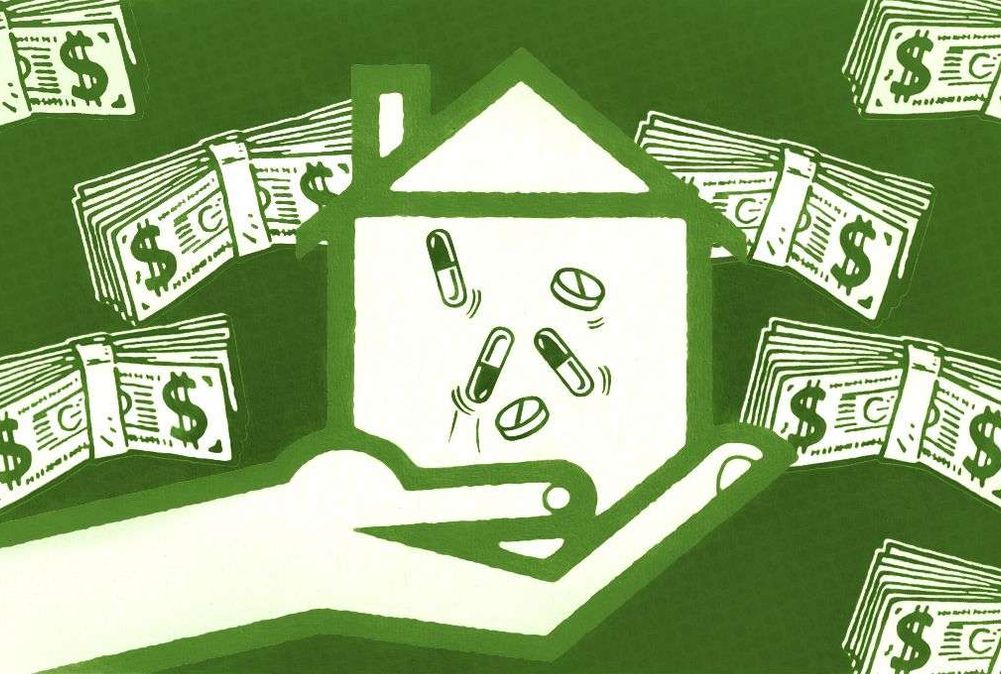
Almost 20,000 People died of problems from hepatitis C in 2013, a liver illness that claims 500,000 lives worldwide, based on the CDC. Till just lately, the perfect course of therapy for hepatitis C was 48 weeks of immune-boosting injections that solely cured half of sufferers and left others with life-threatening unintended effects. However then got here Sovaldi.
Authorized by the FDA in 2013, Sovaldi is nothing wanting a miracle drug for individuals with hepatitis C. Sufferers take one capsule a day for 12 weeks (together with another medicine), and in 90 % of instances, they’re functionally cured of hepatitis C for all times. Sure, for all times.
However there is a catch. Sovaldi prices a jaw-dropping $1,000 a capsule, with a full course of therapies operating $84,000, not factoring in physician’s charges. In case your insurance coverage would not cowl Sovaldi, or your state’s Medicaid packages will not pay for it, you are wanting on the well being care equal of shopping for a small home.
Let’s keep on with that home analogy for a minute. Few People can afford to purchase a home up entrance in money. That is why banks provide mortgages, in order that householders pays for a home incrementally over 20 to 30 years. What if we created the identical kind of mortgage for life-changing, however loopy costly well being care therapies — a mortgage for a treatment?
That is precisely what researchers on the MIT Laboratory for Monetary Engineering and the Dana-Farber Most cancers Institute have proposed in a current article within the journal Science Translational Medication. By providing mortgage-style well being care loans (HCLs), extra People would probably have entry to breakthrough medical therapies, not just for hepatitis C, but in addition for most cancers and different uncommon and lethal ailments.
Up to now, the perfect medicine had been “upkeep” medicine, comparatively cheap capsules for reducing ldl cholesterol or managing blood sugar {that a} affected person would take for all times. Now scientists have the instruments to develop a one-shot treatment in a capsule. However these cures, like Sovaldi, can be expensive.
Earlier than you rail at pharmaceutical firms for charging $1,000 for a capsule, it is essential to appreciate {that a} lifetime of old-school hepatitis C therapies — plus the robust probability of a liver transplant — would value the identical or greater than a 12-week course of Sovaldi. The actual drawback with this new breed of miracle drug is not the price, per se, however the truth that sufferers must pay for it unexpectedly.
In that case, the proposal for a mortgage-style mortgage to cowl the upfront value of curatives appears sound. The authors of the paper run situations during which these well being care loans are securitized like mortgages and offered to traders. This may be higher than the present strategies obtainable for paying for sudden medical payments, corresponding to taking out a second mortgage on the household home or utilizing bank cards with excessive rates of interest.
"The truth that 62 % of all private bankruptcies in 2007 had been associated to medical bills and three-quarters of these submitting for chapter had some type of medical health insurance underscores the necessity for a extra environment friendly well being care mortgage market," the researchers write.
All of it appears to make excellent sense. Till you speak to Soeren Mattke.
Mattke is a senior scientist on the RAND Company and the managing director of RAND Well being Advisory Providers. He, too, is deeply involved about the price and availability of revolutionary medicine like Sovaldi, and he agrees that different technique of financing should be explored. However he isn’t on board with the above proposal.
“The [Science Translational Medicine] paper is intellectually attention-grabbing, however the idea of constructing people repay well being care prices is a extremely dumb concept in my thoughts,” says Mattke.
The research authors restricted low-income individuals from their proposal since they are saying that they will get drug funding by means of Medicaid (or maybe a particular authorities program.) Mattke argues that it is lower-income Medicaid recipients who’re most certainly to lack entry to life-saving medicine like Sovaldi. Many state Medicaid packages have put onerous restrictions on who can get Sovaldi, reserving the costly therapy for less than the sickest sufferers. The remainder have to attend their flip.
“A pharmaceutical firm with an costly breakthrough drug might say to Medicaid, ‘OK, you have to deal with 10,000 sufferers, however you possibly can solely afford to pay for 1,000 sufferers per 12 months. We’ll provide the medicine proper now for all 10,000 sufferers and also you pay us again over the following 10 years,’” Mattke says. “These financing preparations aren’t extraordinary in medical care, they’re simply not established with issues which might be consumed immediately, like medicine. Conceptually, to me, it is actually not that totally different.”
Now That’s Nuts
Sovaldi is a discount in comparison with Glybera, the primary gene remedy accepted in Europe, which carries a price ticket of $1 million.






















